|
Celebrating the IYA
{International Year of Astronomy by honoring Galileo's wish of
having many precise replicas of his telescopes to
continue his work.
This site is about the Researching, Making and Supplying The Worlds Finest, To Date , Museum Quality Replicas of Galileo's Telescope IMSS 2427 & 2428: by Jim & Rhoda Morris
Click here
to go to our main Galileo Web-Site
.
|
|
Our Replica of Galileo's Telescope IMSS
INV
#2428.
Florence Italy.
There are
over a hundred pieces in making the telescope IMSS 2428,over 400
hand stamped decorations using 21 separate gold stamps, months
of measurement of the decorative patterns on the originals to make
these gold stamping dies. Even copying most of irregularities in the
pattern of the original
Why?
Below is the interesting
step by step process of making the IMSS# 2428 |
Our mission statement parallels Galileo's. See white box below. We are making very precise replicas of Galileo's telescopes to help spread the significance of basic scientific research using Galileo as a case study of how science works. 1,What was Galileo really like?
Is he just about telescopes and church? In the latter half he discuses the amount of work and the difficulty in funding his science. So Galileo is relevant to to day science and we get the flavor of the business of science in 1600 and notice that it is not so different than today, including the nature of adversaries to science. So its a good working example for teaching purposes Taking up Galileo's challenge in his letter we have taken up the task of helping to tell Galileo's story and passing its very important lessons on to the public by replicating with great care, Galileo's two internationally famous telescopes. We have and are building these replicas using the measurements that we made with the assistance of the the IMSS staff for the two originals telescopes on display at the IMSS museum in Florence, Italy and from information published in the literature. We critiqued all these data as professional scientist with considerable technical experience in experimental physics and chemistry Today many are concerned that there is the same or maybe greater hostility against basic research today than 400 years ago. The problem is our issues are of greater proportions, than that the choice of a planetary system to support, Our issues are evolution versus intelligent design. stem cell research versus definitions of life, global warming and scientist lying to mention a few.. We invite you to Click here to read a special scientific paper published in Science, May 18, 2007 discussing a serious local and global threat to our science ""Childhood origins of adult resistance to science"? It is coauthored By Paul Bloom and Deena Skolnick Weisberg (Yale) and focuses on neuroscience and evolutionary biology but there is evidence that it's true for most all branches of science including astronomy. We have created our own Abstract of this important paper for one to consider. So in the
authors opinion Galileo's story is even more
relevant today and his solution is even more
relevant and important. Presented in the right
format emphasizing trust more strongly in the
display could help reduce the skepticism of
scientific work.
Again |
Our Replica of Galileo's Telescope
IMSS
INV#2427
, Now at IMSS Florence Italy. Adler Planetarium Chicago Illinois Beijing Planetarium, etc 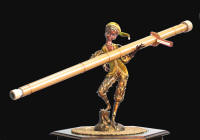
We constructed
INV # 2427, pictured
above, for
the Adler Planetarium. It re-creates
the equally interesting laboratory type
telescope and the only other known telescope ascribed to
Galileo. Its main barrel consists of a split wood
tube covered with paper, painted, and reinforced
with copper wire bands along its full length. Above a micrometer such as Galileo may have used for measure telescope power versus lens shape and for measuring the distance of Jupiter moons from the planet We have recently furnished the extra
accessories below to the
Huntington Library for
their new displays on science.  A short note; One cannot convince us that Galileo did not try positive lenses in his development work because there were certainly more positive lenses than negative ones in the inventory of spectacle and magnifiers shops, one of his first sources of lenses. 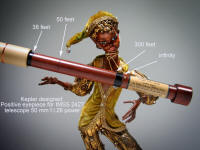 This was a special Kepler eyepiece we especially designed to focus on objects less than 40 feet from the telescope and have a power of about 26. We have coupled this telescope with a sort of "Galiletarium "(a planetarium for Galilean objects, as a target of images, with proper scale, of the celestial objects for which Galileo made such remarkable new discoveries through his telescopes. Call or email us for details... This model has been a successful tool
for showing the location of the essential parts Our half telescope
IMSS 2427 mounted on a stand for display Can one use Galileo's
two telescopes in doors? Yes depending on the size of the room.
Even though most everyone knows that telescopes are generally used
to bring thing that are far away closer, that the closer the object
is the further one has to pull out the eyepiece to focus on that
object. Of course the distance one can pull out the eyepiece before
it falls out of the telescope is limited to how long it is. The
graph below gives us the information for the shortest distance the
object can be from the front of the telescope |
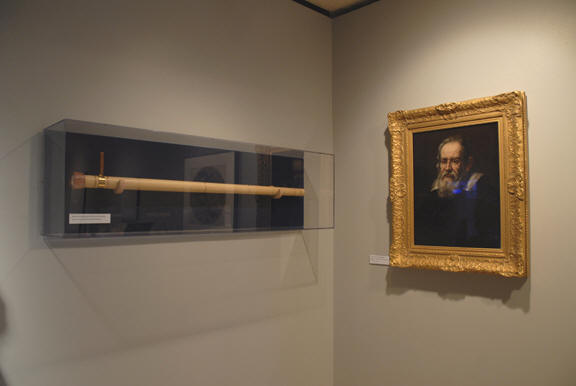
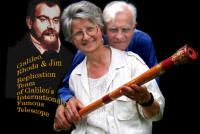
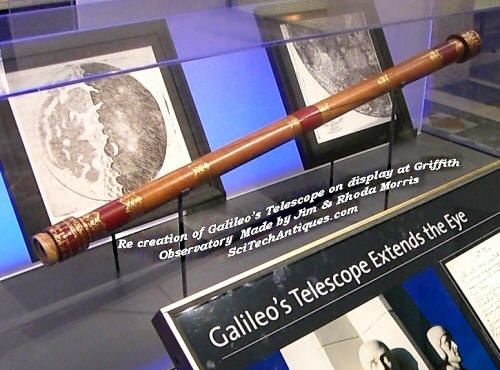
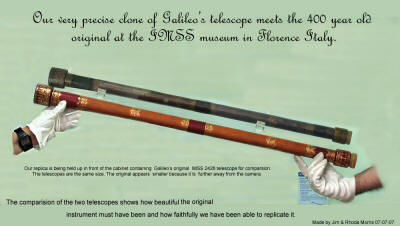

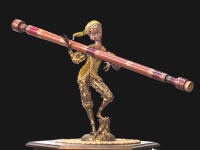
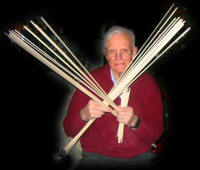
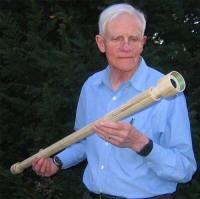
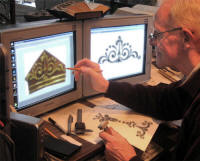
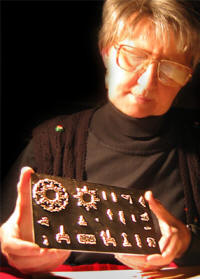
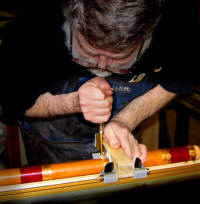
[1]_small1.jpg)
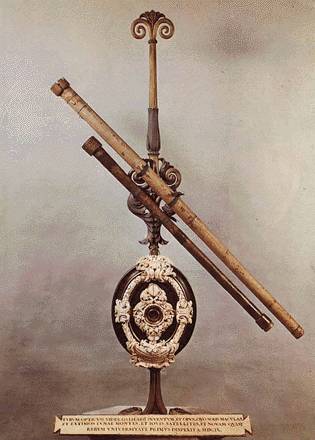
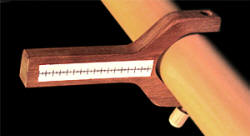


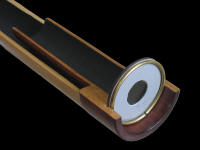
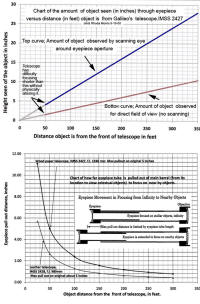
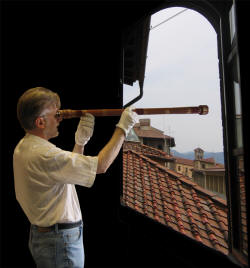
[1]_small.jpg)